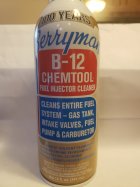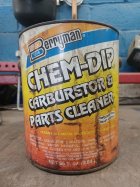TTE
Gold $$ Contributor
Looked up some old threads, but no clear answer was posted as to what works really well that is not abrasive.
I am old school, when I started shooting, all I heard was Hoppie #9, no bronze brushes and clean until patches come out clean. Well, now that I have learned more from this site (and others) I need to rethink my cleaning routine.
Seems like carbon is more important to attack than copper, as copper seems easier to remove.
I have used Carb Out with some good success, but have a safe full of rifles that will need to be cleaned more thoroughly.
One of the threads mentioned Sea Foam to remove the carbon, but no follow up on how or if it worked. I have used Sea Foam in my car and bike, but after some additional research, I found that this works better for injectors/fuel systems -

My question, has anyone tried this or another injector cleaner in their expensive barrel ... and does it work well at getting the carbon out ? This stuff is pretty affordable as well
I would appreciate any insight. Thanks.
I am old school, when I started shooting, all I heard was Hoppie #9, no bronze brushes and clean until patches come out clean. Well, now that I have learned more from this site (and others) I need to rethink my cleaning routine.
Seems like carbon is more important to attack than copper, as copper seems easier to remove.
I have used Carb Out with some good success, but have a safe full of rifles that will need to be cleaned more thoroughly.
One of the threads mentioned Sea Foam to remove the carbon, but no follow up on how or if it worked. I have used Sea Foam in my car and bike, but after some additional research, I found that this works better for injectors/fuel systems -

My question, has anyone tried this or another injector cleaner in their expensive barrel ... and does it work well at getting the carbon out ? This stuff is pretty affordable as well
I would appreciate any insight. Thanks.
Last edited:













